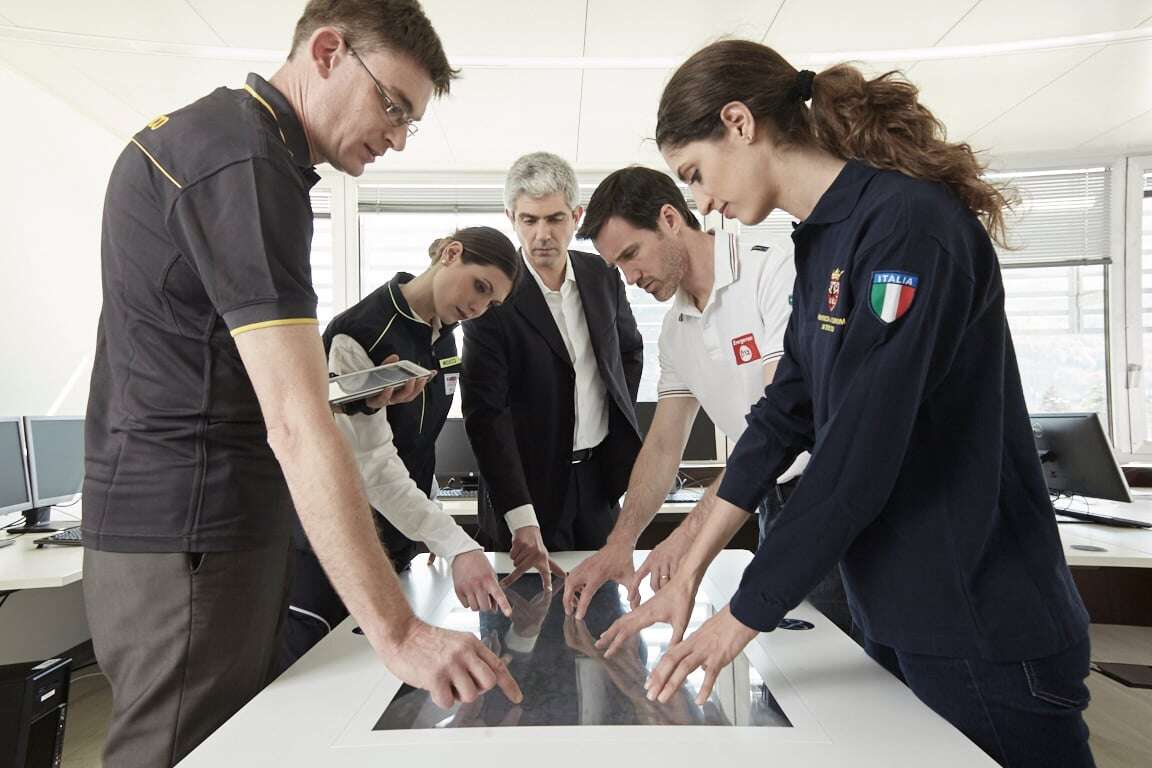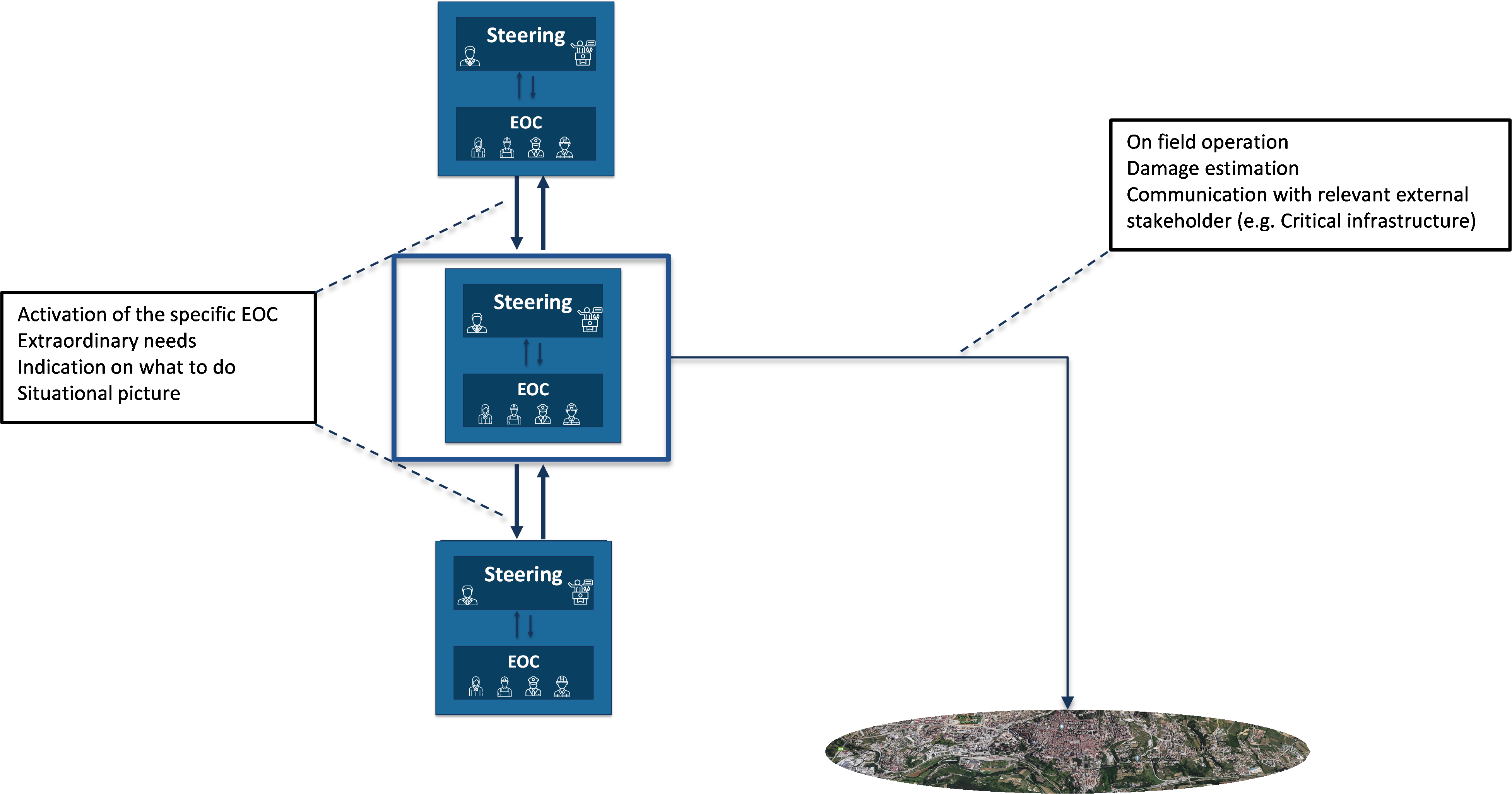Emergency management: a guide to coordination models

Large emergency management is characterized by the intervention of heterogeneous agencies and entities and often by coordination problems.
This management complexity can be found both horizontally and vertically.
In the first case, it involves establishing communication between different agencies, who do not always work together (Fire Brigade, Critical Infrastructure Operators, Road Infrastructures) and who, in the event of an emergency, must make common decisions quickly.
In the second case, difficulties depend on the event escalation; if the agency in charge (e.g. the Municipality) has difficulty, it could request the intervention of a higher-level body. In this scenario, it is necessary to establish an appropriate communication flow and better manage the coordinating entities who are unfamiliar with a given area.
But what are the specific coordination models used in an emergency?
Hierarchical models for emergency management
Although at a European level the picture is varied and nuanced, it is possible to identify the common aspects in large event management, such as:
- Accountability is managed at different hierarchical levels, each of which, except the national level, is divided into different geographic jurisdictions.
- A shared emergency level scale determines the type of intervention required.
- Each responsible unit has a Steering Committee and an Operations Center (EOC).
- The Emergency Operations Center (EOC) organizes and monitors the actions of the responsible units.
- Each responsible unit publishes its own SOPs, which comply with a general framework but are not homogeneous.
- Estimates of potential damages using scientific models, when available, are used only by the national responsibility unit.
We can therefore identify different coordination models (National, Regional, Local) according to the size of the country, divided into an EOC (Emergency Operation Center) for operational operations and a Steering Committee for strategic decisions.

This image shows the relationship between the different entities. Each level communicates with the upper and lower levels for the activation request, extraordinary needs communications, to provide a situational picture and indication on what to do. Each level (usually the lower one) manages field activities such as damage estimation, rescue operations, and communication with relevant stakeholders.
Emergency management: organizational models
Part of an optimized emergency management is defining an organization within each EOC and establishing coordination models between the involved entities.
Each country has its own juridical and territorial characteristics. Italy employs the Augustus method: a model that defines organizational and planning methods. It organizes the EOC with 15 support functions, each competent in a specific area (Logistics, Coordination, Volunteering, Healthcare, Transport, Energy, Telecommunications, etc.). These functions, which usually operate independently, thus coordinate to resolve the emergency.
Other countries have other methods to identify the entity in charge and the chain of command for each risk. There is collaboration, but according to a precise hierarchical model. This model, of American derivation, is called ICS - Incident Command System.
Emergency management: the advantages of a software platform
Such complex management requires not only constant training and exercises for operators but also tools and technologies capable of reducing errors and automating processes.
Safety 1st, Beta 80 Group's software platform is designed precisely to support the Operating Rooms in every aspect of their activity. Here are the main features, useful in the coordination phase of an emergency:
- It is a multi-entity system with a hierarchical and/or collaborative organization. It implements both the Augustus method and the ICS. It ensures that those involved in the emergency share the same platform, each by entering their activities and running their checklists. The platform can be used by several actors, belonging to different hierarchical levels (for example A Region could distribute the platform to all its Municipalities).
- It is a collaborative system. It allows those coordinating the event to engage specific functions and/or within the same event, allowing collaborative management and information sharing.
- It can handle both real events and simulations (such as the Turnkey project) in case of exercises.
- The platform was created to be used both in peacetime, for administrative management, and in the event of an emergency.
- The service architecture allows communications to external parties. These can take place both in an application way (using, for example, the CAP standard - Common Alerting Protocol) and in a traditional way.
Safety 1st is, therefore, able to accompany the various entities in their activities of forecasting and managing large-scale emergencies, in a simple and rapid way.








